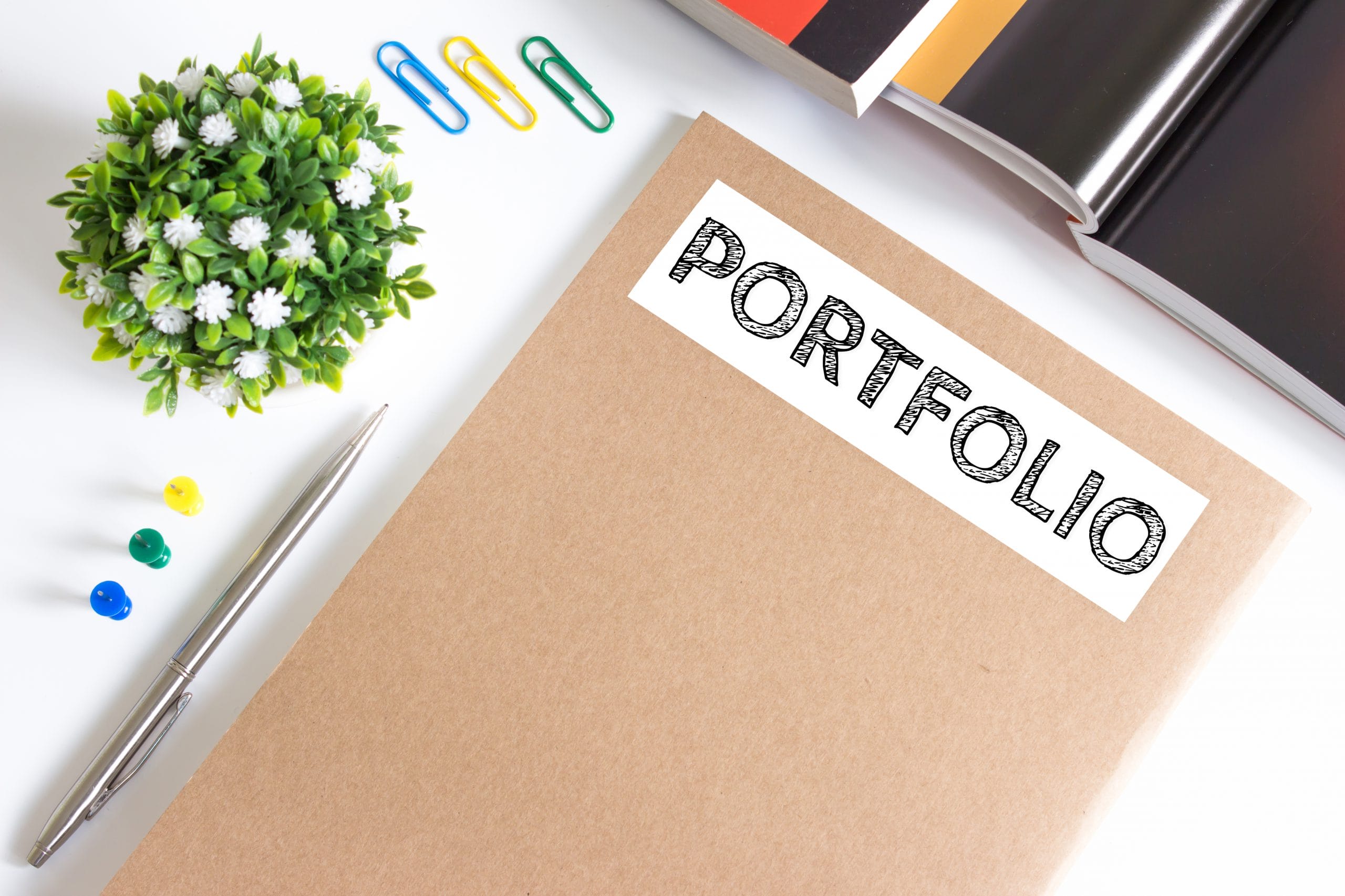In today’s competitive world, having something to set you apart from other candidates in an interview, from other businesses vying for clients, or as a business trying to stand out in a crowded marketplace is a great way to make a good impression. Many professionals and businesses turn to portfolio book creation to help tell their stories in a unique and personal way.
But what is a portfolio book creation and how easy is it to make one for you or your business? Let’s take a look at what goes into portfolio book creation and how you can get started telling your story with your own customized portfolio book creation project.
What Is a Portfolio Book Creation?
A portfolio book is a focused collection of information, pictures, and graphics that represent a person or a company. This bound book is used to showcase things like personal artwork, projects, designs, or photography and the portfolio book creation may be used in place of or in addition to a formal resume for some careers.
Businesses can use a portfolio book to exhibit important client work, demonstrate corporate value, or even tell a business’s history. While all portfolio books can be created uniquely, most present beautiful pictures or graphics and tell some sort of story or present a glimpse into a person or business.
Who Uses Portfolio Books?
Anyone can use a portfolio book creation project to display their work, projects, or creations, so it’s no surprise that portfolio book creation is often done by artists, architects, photographers, graphic designers, and other creative career professionals.
Many times the portfolio book creation is used as an expanded version of a resume where best works can be presented to potential clients, customers, employers, or even educational institutions. Since portfolios can be highly customized and the final product looks extremely professional, they are an ideal way to present information.
All kinds of businesses use portfolios, too. For a business, a portfolio book creation can provide an excellent, professional way to show off past jobs or projects, highlight key components of the company or industry, or even be used as a “look book” to show potential clients different aspects of working with the company or using their services.
Another common way businesses utilize portfolios is to present a company’s history or the story of the business, founders, or another significant part of a company.
Steps to Portfolio Book Creation
Although the main steps are similar, creating a business portfolio and a personal or professional one begins quite differently. The first step is deciding what you are going to use the book for and what its purpose will be.
1. Determine the Purpose of the Portfolio Book
Business: Portfolios can be a place to present a company’s best work, specific client examples, or other key information that needs to be delivered to customers or potential customers in a professional manner.
All business portfolios should be comprised of the most relevant, descriptive information for the intended purpose of the portfolio, including quality pictures to showcase the work.
Personal/Professional: Making a portfolio to capture the beginnings of a career in a creative field will follow a very different strategy than creating a professional portfolio to showcase someone’s life’s work in their specialized field.
Consider who the intended audience will be of the personal or professional portfolio to best determine what should be included as well as the look and feel of the finished product.
2. Collect the Contents
Company Portfolios
- Table of Contents – a quick reference page is a great way to generate interest in the portfolio’s contents
- Company Biography or Story – tell the story of the business, the founder, or how the company got its start
- Highlights – focus on key people like the founder, impactful employees, or clients or key activities that affected the history of the company
- Overview – explain what the company does, what products/services it provides, and how the company fits into the industry as a whole
- Specific Work – include client examples, case studies, sample jobs, or other product descriptions that illuminate the company’s expertise
- Testimonials –including client testimonials, notes from satisfied customers, or ratings of the company can be impactful
Personal/Professional Portfolios
- Background Information – describing who you are and your goals for the future can set the tone for your portfolio
- Resume – either a formal resume or a snippet of one can provide a reminder of the key components of your expertise
- Skills or Certifications – including hard or soft skills as well as degrees or certifications that make you stand out is a great way to use a portfolio to highlight accomplishments and abilities
- Accomplishments and Awards – present significant accomplishments and awards so that those who view your portfolio can easily see how others have recognized your abilities or talents
- Work Samples – the main portion of a personal or professional portfolio; choose samples that either represent all areas of your expertise or choose the most significant ones for the purposes of your abilities or skills in your craft
3. Finishing Details
Once the content of the portfolio book creation is established, formatting and attending to details is the next step. Some of the most important details to work on at this point are establishing the quality and placement of photos or graphics, making sure the margins on each page will not affect the look of the portfolio, creating a quality cover, and confirming the size and length of the book. But the first consideration for your portfolio is the type of binding you will use.
Binding: Binding choices determine how your portfolio book creation will look and feel as well as affect the margins you set for your pages.
Perfect bound creates a traditional book look with a solid spine. The inside margins, called the gutters, need to be larger by ¼ to ½ inch than the other three margins to allow for the page to sink into the center binding.
Saddle Stitch binding is good for portfolios of up to 80 pages but it will not lay flat nor will it have a spine.
Wire-O and Plastic Coil bindings both need an extended gutter like the perfect bound books, but the wire or plastic rings used for portfolio book printing will allow for the book to lay flat.
Photographs/Graphics: Create your portfolio book using only high-resolution photos or graphics. Using at least 300 dpi photos will ensure crisp, clear pictures that represent your portfolio material well.
Margins: Be sure to allow for white space surrounding the pages of your portfolio to create a professional appearance. Top, bottom, and non bound margins should be 1 inch approximately. Margins on the bound side (the gutters) should be adjusted if Perfect, Wire-o or Plastic Coil bindings are used on your self-published portfolio.
Cover: The cover is the perfect place to introduce the business with a logo or a gorgeous picture or present your best work on a personal or professional portfolio. Get professional design help to make sure your cover art looks as great as the rest of the portfolio if you need it.
Sizing: The overall size of the book can be adjusted to fit your needs. Personal and professional books may need to be regularly transported so picking a slightly smaller size to fit inside of a bag or carry case is a good idea while larger books may be ideal for company portfolios that might be on a bookshelf or decoratively on a table.
Length
- Perfect bound books can be any length.
- Saddle stitch books typically need to be produced in total pages in groupings of 4 starting with 8 pages total (8 or 12 or 16 or 20 etc.) up to 80 pages in length.
- Plastic Coil or Wire-O books can be between 8 and 300 (Wire-o) or 500 (Plastic Coil) pages.
4. Create Your Portfolio Book
Once you have decided on a portfolio book creation, the last step is to focus on portfolio book printing. Working with an established, trustworthy online printer like Dazzle Printing can make the final step in bringing your portfolio to life quickly and easily.






